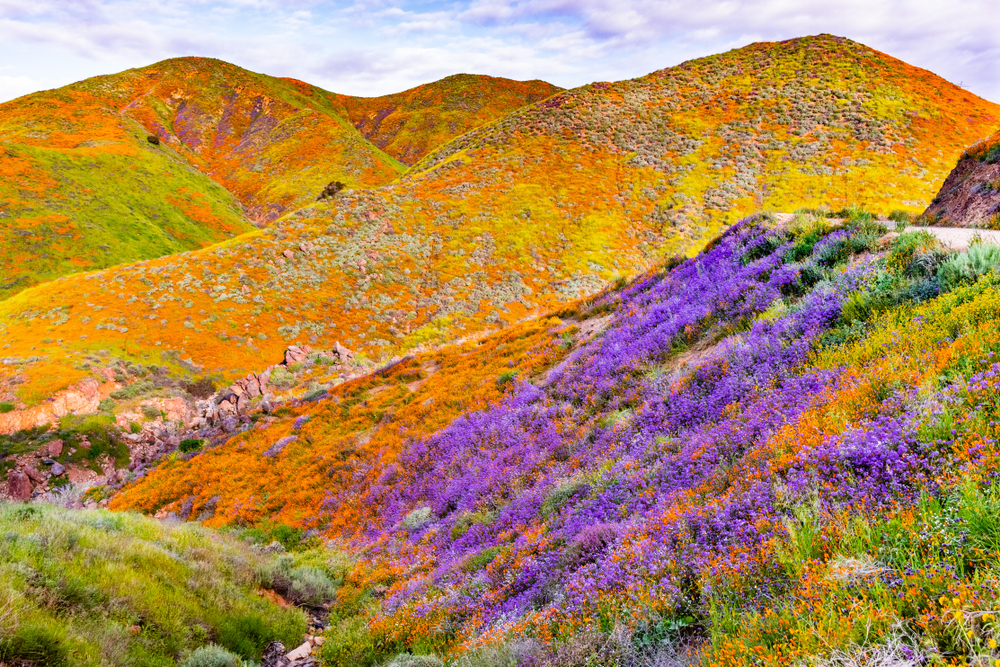Just a few weeks ago, city officials in Lake Elsinore, Calif., shut down their trails to prevent members of the public from disrupting a potential superbloom of golden poppy flowers in the region.
The shutdown was to prevent chaos from breaking out over people trying to view the flowers, much like what happened in Lake Elsinore in 2019 when a different superbloom took place. But what exactly is a superbloom, and why are people so intent on seeing one?
The Basics of a Superbloom
Superblooms are what their name implies: an extreme, higher-than-normal blooming of wildflowers. The rare phenomenon is nearly exclusive to the deserts of California and almost only emerges in California state or national parks, such as Death Valley National Park, according to National Geographic.
Superblooms are kickstarted by “a regular series of soaking rains, starting in October and extending through February, following multiple years of drought and little or no flowers,” according to the University of California-Riverside. Cooler weather can also help the longevity of superblooms.
Read More: How Flowering Plants Conquered the World
However, excessive rain doesn’t always lead to superblooms, as desert annuals (plants that grow there yearly) can disrupt the growth of other wildflowers. Additionally, a type of grass called bromes can grow quickly in the area and prevent wildflower growth.
It is also important to note that the term, “superbloom” was coined by the media, not ecologists or botanists. According to Richard Minnich, a professor of Earth sciences at the University of California-Riverside, a superbloom is “all in the eye of the beholder.”
(Credit:John Dvorak/Shutterstock)
History’s Most Famous Superblooms
While superblooms technically don’t happen that often, three of California’s most famous superblooms have occurred in the past three decades.
First, in 1991, the Coachella Valley experienced an explosion in wildflower growth following extreme amounts of rainfall. Scientists coined the wildflower growth as the “March Miracle.”
In 2005, both Death Valley and Coachella Valley saw vibrant booms of wildflower growth in the spring. In 2016, 11 years later, Death Valley underwent yet another superbloom. It brought fields of wildflowers to life and color to the valley for the first time in a decade.
Read More: 5 of the Strangest Looking Flowers
Finally, in 2019, a superbloom occurred in Walker Canyon near Lake Elsinore, Calif. The fields of flowers drew “Disneyland-sized crowds,” according to officials in the area. Lake Elsinore community members hope that the shutting down of trails will help prevent large crowds from flocking to see the flowers this time around.














